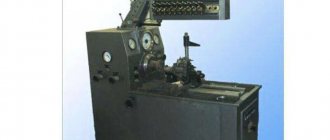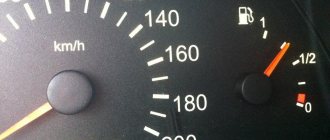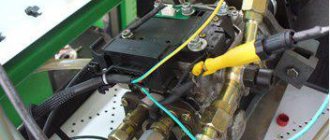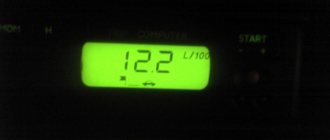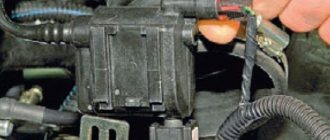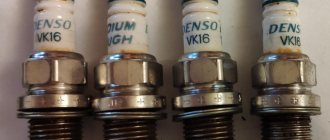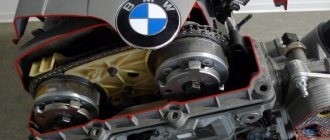There is no system in the car that is not needed. But if we conditionally divide them into main and secondary, then the first category will include fuel, ignition, cooling, and lubricants. Each internal combustion engine will have one or another modification of the listed systems.
True, if we talk about the ignition system (its design and the principle of operation it has are described here), then only a gasoline engine or an analogue that is capable of running on gas receives it. A diesel engine does not have this system, but the ignition of the air-fuel mixture has a similar principle. The ECU determines the moment when this process needs to be activated. The only difference is that instead of a spark, a portion of fuel is supplied to the cylinder. Due to the high temperature of the highly compressed air in the cylinder, diesel fuel begins to burn.
The fuel system can have either single injection (a point method of spraying gasoline) or distributed injection. The differences between these modifications, as well as other injection analogues, are described in detail in a separate review. Now let’s focus on one of the most common developments, which is found not only in budget cars, but also in many premium segment models, as well as sports cars running on gasoline (diesel engines use only direct injection).
This is a multi-point injection or MPI system. Let's discuss the design of this modification, what is the difference between it and direct injection, as well as what its advantages and disadvantages are.
The basic operating principle of the MPI system
Before understanding the terminology and operating principle, it should be clarified that the MPI system is installed exclusively on the injector. Therefore, those who are thinking about the possibility of upgrading their carburetor internal combustion engine should consider using other methods of garage tuning.
In the European market, car models with MPI markings on the power unit are not uncommon. This is an abbreviation for multi-point-injection or multi-point fuel injection system.
The very first injector replaced the carburetor, thanks to which the control of the enrichment of the air-fuel mixture and the quality of filling the cylinders is no longer carried out by mechanical devices, but by electronics. The introduction of electronic devices is primarily due to the fact that mechanical devices have certain limitations in terms of fine-tuning systems.
Electronics copes with this task much more efficiently. Plus, maintenance for such cars is not so frequent, and in many cases it comes down to computer diagnostics and resetting detected errors (this procedure is described in detail here).
Now let's look at the operating principle according to which fuel is sprayed to form a VTS. Unlike single injection (considered an evolutionary modification of the carburetor), the distributed system is equipped with an individual nozzle for each cylinder. Today, another effective scheme is being compared with it - direct injection for gasoline internal combustion engines (there is no alternative in diesel units - in them diesel fuel is sprayed directly into the cylinder at the end of the compression stroke).
To operate the fuel system, the electronic control unit collects data from many sensors (their number depends on the type of vehicle). The key sensor, without which no modern vehicle will operate, is the crankshaft position sensor (this is discussed in detail in another review).
In such a system, fuel is supplied to the injector under pressure. Spraying occurs into the intake manifold (read more about the intake system here), as is the case with the carburetor. Only the distribution and mixing of fuel with air occurs much closer to the intake valves of the gas distribution mechanism.
When a certain sensor fails, a certain emergency mode algorithm is activated in the control unit (which one depends on the broken sensor). At the same time, the Check Engine message or engine icon lights up on the car’s dashboard.
Conclusion
The injector is a modern solution for a modern car. Its operation ensures the best consumption, power and environmental friendliness of the machine. But there are also difficulties. Due to the complexity of the work, repairs and fault diagnosis can only be carried out by representatives of service centers who have the necessary equipment for testing. A huge number of sensors allows you to calculate the optimal dose of fuel supply and its mixture, however, if they are faulty or incorrectly configured, instead of the expected savings in gasoline and power, you can get a completely opposite result. Most often, sensors in the system fail. Their cost is relatively high, and the duration of operation depends primarily on the quality of gasoline. And fuel can come across with impurities, even at good gas stations.
Multipoint injection system design
The operation of multipoint distributed injection is inextricably linked to the air supply, as in other fuel systems. The reason is that gasoline is mixed with air in the intake tract, and to prevent it from settling on the walls of the pipes, the electronics control the position of the throttle valve, and in accordance with the flow force, the injector will inject a certain amount of fuel.
A drawing of a multipoint injection fuel system will consist of:
- Throttle valve;
- Fuel rail (a line that makes it possible to distribute gasoline to the injectors);
- Injectors (their number is identical to the number of cylinders in the engine design);
- DMRV sensor;
- Gasoline pressure regulator.
All components operate according to the following scheme. When the intake valve opens, the piston performs the intake stroke (moves towards bottom dead center). Due to this, a vacuum is created in the cylinder cavity, and air is sucked from the intake manifold. The flow moves through the filter, and also passes near the mass air flow sensor and through the throttle body (more about its function in another article).
In order for the vehicle circuit to function, in parallel with this process, gasoline is injected into the passing stream. The nozzle is designed in such a way that the portion is sprayed onto the mist, which ensures the most efficient preparation of VTS. The better the fuel is mixed with the air, the more efficient the combustion will be, and the less load on the exhaust system, the key component of which is the catalytic converter (read about why every modern car is equipped with it here).
When small drops of gasoline enter a hot environment, they evaporate more intensely and mix with air more efficiently. Vapors ignite much faster, resulting in fewer toxic substances in the exhaust.
All injectors have an electromagnetic drive. They are connected to a line through which fuel is supplied under high pressure. The ramp in this scheme is needed so that a certain amount of fuel accumulates in its cavity. Thanks to this reserve, different effects of the nozzles are ensured, ranging from constant to multi-layer. Depending on the type of vehicle, engineers can implement different types of fuel supply for each engine operating cycle.
To ensure that during constant operation of the gasoline pump, the pressure in the line does not exceed the maximum permissible parameter, the ramp device has a pressure regulator. Read separately about how it works, as well as what elements it consists of. Excess fuel is discharged through the return line into the gas tank. The CommonRail fuel system, which is installed on many modern diesel units, has a similar operating principle (it is described in detail here).
Gasoline enters the ramp through the fuel pump, and there it is sucked through a filter from the gas tank. The distributed type of injection has an important feature. The injector nozzle is mounted as close as possible to the intake valves.
No vehicle will work without the XX regulator. This element is installed in the throttle valve area. The design of this device may differ in different car models. Basically it is a small clutch with an electric motor. It is connected to the bypass channel of the intake system. When the throttle is closed, a small amount of air must be supplied to prevent the engine from stalling. The control unit microcircuit is configured so that the electronics are able to independently regulate engine speed depending on the situation. A cold and warm unit requires its own proportion of the air-fuel mixture, so the electronics adjusts different idle speeds.
A gasoline consumption sensor is installed as an additional device in many vehicles. This element sends impulses to the trip computer (on average there are about 16 thousand such signals per liter). This information is not as accurate as possible, since it appears based on recording the frequency and time of operation of the sprayers. To compensate for the calculation error, the software uses an empirical measurement factor. Thanks to this data, the car's on-board computer displays average fuel consumption, and in some models it determines how far the car will travel in the current mode. Such data helps the driver plan the intervals between refueling the vehicle.
Another system combined with the operation of the injector is the adsorber. Read about it in detail separately. In short, it allows you to maintain the pressure in the gas tank at atmospheric level, and gasoline vapors are burned in the cylinders during operation of the power unit.
Material of manufacture of the cylinder block and cylinder liners
Depending on the displacement and other technical and operational characteristics, purpose, there are several layout options (location of engine cylinders), as well as several materials for the manufacture of the block and cylinder.
Since conditions of variable pressures arise in the cylinder above the piston cavity, the inner surface of the cylinder walls comes into contact with flame and hot gases (the temperature of which ranges from 1500-2500 ° C), such a part must be made of high-strength materials with great mechanical strength. The sliding speed of the piston rings along the cylinder walls is quite high, from 12 to 15 m/sec, so the inner walls of the cylinder must have increased rigidity. In this case, the service life of the cylinder (cylinder liner) will increase and the part will be more resistant to various types of wear (abrasive, corrosive and erosive). If the surface of the cylinder block is worn beyond the permissible limits (as determined by the cylinder block defect method), it is necessary to repair the cylinder block.
If there are no restrictions on the weight of the engine, for example a tractor engine, then the cylinder block is made of pearlitic cast iron.
On transport engines, where there are weight restrictions, I use lighter aluminum and magnesium alloys to make the cylinder block.
Advantages of gray cast iron cylinder blocks:
- low cost;
- high technology of casting;
- stability of material properties;
- possibility of repairing block cracks (soldering, welding, epoxy glue);
- high hardness and rigidity of surfaces, resistance to overheating;
Disadvantages of cast iron
The main disadvantage of cast iron is its large mass (density is 2.7 times higher) and lower thermal conductivity.
Aluminum alloys are more expensive, but aluminum cylinder blocks have much less weight. Aluminum alloys have a number of features that should be taken into account in the manufacture and operation of cylinder blocks.
MPI operating modes
Distributed injection can operate in different modes. It all depends on the software that is installed in the microprocessor of the control unit, as well as on the modifications of the injectors. Each type of gasoline spray has its own operating characteristics. In short, the work of each of them boils down to the following:
- Simultaneous injection mode. This type of injector has not been used for a long time. The principle is the following. The microprocessor is configured to synchronously spray gasoline into all cylinders simultaneously. The system is configured so that at the beginning of the intake stroke in one of the cylinders, the injector injects fuel into all pipes of the intake manifold. The disadvantage of this scheme is that the 4-stroke engine will operate from sequential firing of the cylinders. When one piston performs the intake stroke, another process is working in the others (compression, power stroke and exhaust), so fuel is needed exclusively for one boiler during the entire engine cycle. The rest of the gasoline simply sat in the intake manifold until the appropriate valve opened. This system was used in the 70-80s of the last century. In those days, gasoline was cheap, so overconsumption was of little concern to anyone. Also, due to excessive enrichment, the mixture did not always burn efficiently, and therefore a large amount of harmful substances was released into the atmosphere.
- Pair mode. In this case, engineers reduced fuel consumption by reducing the number of cylinders that simultaneously receive the required portion of gasoline. Thanks to this improvement, it was possible to reduce harmful emissions as well as fuel consumption.
- Sequential mode or distribution of fuel across timing phases. On modern cars that have a distribution type fuel system, this scheme is used. In this case, the electronic control unit will control each injector separately. To ensure that the VTS combustion process is as efficient as possible, the electronics provide a slight injection advance before the intake valve opens. Thanks to this, a ready-made mixture of air and fuel enters the cylinder. Spraying is done through one nozzle for a full engine cycle. In a four-cylinder internal combustion engine, the fuel system operates identically to the ignition system, usually in the 1/3/4/2 sequence.
The latest system has proven itself to be decently economical, as well as a high level of environmental friendliness. For this reason, to improve gasoline injection, various modifications are being developed, based on the operating principle of phased distribution.
Among manufacturers of fuel systems providing distributor injection of gasoline, Bosch occupies a leading position. The product range includes three types of vehicles:
- K- Jetronic . This is a mechanical system that distributes gasoline to atomizers. It works continuously. In vehicles produced by the BMW concern, such engines had the abbreviation MFI.
- KE- Jetronic . This system is a modification of the previous one, only the process is controlled electronically.
- L - Jetronic . This modification is equipped with MDP injectors, which provide pulsed fuel supply at a specific pressure. The peculiarity of this modification is that the operation of each sprayer is adjusted depending on the settings programmed in the ECU.
Homogeneous mixture formation
Everything is a little simpler here; fuel injection occurs almost simultaneously with air intake. All this is done on the intake stroke, that is, when the intake valve is open and the piston goes down. While the piston makes its way down and back up, the mixture of air and gasoline will have time to mix.
Since the fuel is still injected under high pressure, mixture formation is improved, and this allows the use of more air. Therefore, the use of turbochargers and superchargers is available for such engines. Read here about the main injector malfunctions.
Checking multi-point injection
A violation of the gasoline supply circuit occurs due to the failure of one of the elements. Here are the symptoms that can be used to recognize a malfunction of the injection system:
- The engine starts with great difficulty. In more critical situations, the engine does not start at all.
- Unstable operation of the power unit, especially at idle.
It is worth paying attention to the fact that these “symptoms” are not characteristic exclusively of the injector. Similar problems occur in the event of problems with the ignition system. Computer diagnostics usually helps in such situations. This procedure allows you to quickly identify the source of failure that is causing multipoint injection to be ineffective.
In most cases, the specialist simply resets errors that prevent the control unit from correctly adjusting the operation of the power unit. If computer diagnostics show a breakdown or incorrect operation of the spray mechanisms, then before you begin searching for the failed element, it is necessary to eliminate the high pressure in the line. To do this, simply disconnect the negative terminal of the battery and loosen the fastening nut in the line.
There is another way to reduce the pressure in the main line. To do this, disconnect the fuel pump fuse. Then the engine starts and runs until it stalls. In this case, the unit itself will generate the pressure of the fuel located in the ramp. At the end of the procedure, the fuse is installed in its place.
The system itself is checked in the following sequence:
- A visual inspection of the electrical wiring is carried out to see if there is oxidation on the contacts or damage to the cable insulation. Due to such malfunctions, power may not be supplied to the actuators, and the system either stops working or becomes unstable.
- The condition of the air filter plays an important role in the operation of the fuel system, so it is important to check it.
- Spark plugs are checked. By the deposits on their electrodes, you can recognize hidden problems (read about this in detail separately) of the systems on which the operation of the power unit depends.
- The compression in the cylinders is checked. Even if the fuel system is working properly, with low compression the engine will be less dynamic. There is a separate review on how this parameter is checked.
- In parallel with vehicle diagnostics, you need to check the ignition, namely, whether the OZ is set correctly.
After the problems with the injection have been corrected, it needs to be adjusted. Here's how the procedure is performed.
Multipoint injection adjustment
Before considering the principle of injection adjustment, it is worth considering that each modification of the vehicle has its own subtleties of operation. Therefore, setting up the system can occur in different ways. Here's how the procedure is performed for the most common modifications.
Bosch L3.1, MP3.1
Before you start setting up such a system, you need to:
- Check the ignition condition. If necessary, worn parts are replaced with new ones;
- Make sure the throttle is working properly;
- A clean air filter is installed;
- The engine warms up (until the fan turns on).
First, the idle speed is adjusted. For this purpose, there is a special adjusting screw on the throttle. If you turn it clockwise (twists), then the XX speed indicator will decrease. Otherwise, increase.
In accordance with the manufacturer's recommendations, exhaust quality analyzers are installed on the system. Next, remove the plug from the air supply adjusting screw. By turning this element, the composition of the VTS is adjusted, which will be indicated by the exhaust gas analyzer.
Bosch ML4.1
In this case, the idle speed is not set. Instead, the device mentioned in the previous review is connected to the system. The operation of multi-point spraying is adjusted based on the state of the exhaust gases using an adjusting screw. When the hand turns the screw clockwise, the CO composition will increase. When turning in the other direction, this indicator decreases.
Bosch LU 2-Jetronic
Such a system is adjusted to the XX speed in the same way as the first modification. The mixture enrichment is adjusted using algorithms programmed into the microprocessor of the control unit. This parameter is adjusted in accordance with the pulses of the lambda probe (read more about the device and its operating principle separately).
Bosch Motronic M1.3
The idle speed in such a system is regulated only if the gas distribution mechanism has 8 valves (4 for intake, 4 for exhaust). In 16-valve engines, XX is adjusted by an electronic control unit.
The 8-valve valve is adjusted according to the same scheme as previous modifications:
- XX is adjusted with a screw on the throttle;
- A CO analyzer is connected;
- Using the adjusting screw, the composition of the military technical equipment is adjusted.
Some cars are equipped with a system such as:
- MM8P;
- Bosch Motronic5.1;
- Bosch Motronic3.2;
- Sagem-Lukas 4GJ.
In these cases, it will not be possible to adjust either the idle speed or the composition of the air-fuel mixture. The manufacturer of such modifications did not provide for this possibility. The ECU must do all the work. If the electronics were unable to adjust the injection operation correctly, it means that there are some system errors or breakdowns. They can only be identified through diagnosis. In the most difficult situations, incorrect operation of the vehicle is caused by a breakdown of the control unit.
Service
This group includes not only changing the engine oil, but also adjusting the valves.
First of all, it’s worth mentioning about the VAZ 2112, the oil change of which should be performed every 15,000 kilometers. Of course, if you replace it a little earlier or a little later, it's okay. The main thing is not to forget about this matter so that the 2112 engine does not starve and fail.
Change of oil
To replace, you will need a few tools and a special container for old oil.
Procedure for draining old oil:
Unscrew the special plug located under the power unit
To do this, you can use a 17 key or just your hands. You need to drain it very carefully so that the oil does not get on the floor or your skin, as it is very hot. If you are careless, you can get a serious burn and other troubles. After unscrewing, you should wipe the oil pan and the 2112 engine itself
This is necessary to keep everything clean. We wrap the cork and move on. We unscrew the oil filter located under the hood of the car. This action should be done using a special screwdriver or puller. After this, you can coat the gasket of the new filter with oil and screw the latter onto the fitting. You need to be very careful about the force applied so as not to damage the thread.
Procedure for filling:
- Remove the cap from the filler neck;
- We take high-quality oil and fill it in an amount of 3.4 liters. You should monitor the level very carefully so that the VAZ 21128 engine receives its amount of special fluid;
- After all this, you can start the power unit and let it run for a few minutes. This is necessary so that the oil passes through all systems and creates a protective film. Next, turn off the unit and check the oil level.
- If it is necessary to add, then add;
- You should also look at the dashboard. If the VAZ 21128 engine is running stably, then the check engine light should not be on.
Adjustment of valves
Now you can move on to the most difficult and interesting part. The fact is that regulating a 16 valve unit is not the easiest thing; special experience is required.
First of all, let's look at the technology using the device:
- Open the valve cover and remove the cover from the timing belt;
- Install a special device designed to regulate the 8 and 16 valve mechanism;
- Set the required marks on the crankshaft and camshaft. This is necessary in order to correctly adjust the valves. Check the timing belt tension. If necessary, tighten it and turn the camshaft several teeth clockwise;
- We check the gap using a feeler gauge;
- We unscrew the washer and look at what is marked on it. Next, we buy a ready-made set of washers and install them instead of the old one.
Without device:
- The first step is to remove the valve covers;
- Raise one of the wheels using a jack;
- Determine where the intake and exhaust valves are located;
- Turn the wheel until one of the crankshaft elbows is on top. We measure the clearance of the first valve;
- Next, you need to calculate which washer will be needed in this case. This action is also necessary when tuning the VAZ 2112 engine is done.
You can calculate the thickness of the washer using a special formula:
- Н = В+(А–С), mm,
- where A is the measured gap;
- B – thickness of the removed washer;
- C – nominal gap;
- N – thickness of the new washer.
Here is a table that will help in adjusting the valves of the VAZ 2112 engine tuning:
| ANGLE AT WHICH THE CRANKSHAFT SHOULD BE TURNED | FISTS | |
| HIGH SCHOOL GRADUATION | INLET | |
| 40-50 | 1 | 3 |
| 220-230 | 5 | 8 |
| 400-410 | 8 | 6 |
| 580-590 | 4 | 7 |
All this allows you to get rid of the tripping of the power unit.
MPI System Differences
MPI engines compete with modifications such as FSI (developed by VAG). The only difference between them is the place where the fuel is sprayed. In the first case, injection is carried out in front of the valve at the moment when the piston of a particular cylinder begins to perform the intake stroke. The sprayer is mounted in a pipe leading to a specific cylinder. The air-fuel mixture is prepared in the manifold cavity. When the driver presses the gas pedal, the throttle valve opens according to the force.
As soon as the air flow reaches the sprayer's area of action, gasoline is injected. You can read more about the design of electromagnetic injectors here. The bell of the device is made so that a portion of gasoline is distributed into the smallest fractions, which improves mixture formation. When the intake valve opens, a portion of the VTS enters the operating cylinder.
In the second case, each cylinder is provided with an individual injector, which is installed in the cylinder head next to the spark plugs. In this arrangement, gasoline is sprayed according to the same principle as diesel fuel in a diesel engine. Only the ignition of the VTS occurs not due to the high temperature of highly compressed air, but from an electrical discharge formed between the electrodes of the spark plug.
FSI engine
There is often a debate between owners of vehicles that have a distributor or direct injection engine about which unit is the best. At the same time, each of them gives their own arguments. For example, MPI proponents favor such a system because it is easier and cheaper to maintain and repair compared to its FSI-type counterpart.
Direct injection is more expensive to repair, and there are few qualified specialists capable of performing the work at a professional level. This system is used with a turbocharger, and MPI engines are exclusively naturally aspirated.
Another classification option
The system can be of several types and options.
- A simultaneous combination is rare from a practical point of view. During one revolution, all the nozzles in it fire in simultaneous order.
- Parallel operation (in pairs) - during one revolution of the shaft, the injectors fire in pairs, once per revolution.
- Phased, sequential - when each of the nozzles is separately regulated during one rotation of the shaft. In this case, the element is opened once before the intake.
Regardless of the classification option, all mechanisms have differences in a number of parameters taken into account during operation.
Advantages and disadvantages of multi-point injection
The advantages and disadvantages of multipoint injection can be discussed through the prism of comparing this system with direct fuel supply to the cylinders.
The advantages of distributed injection include:
- Significant gasoline savings when compared with this system with mono-injection or carburetor. Also, this motor will comply with environmental standards, since the quality of military vehicles is much higher.
- Due to the availability of spare parts and a large number of specialists who understand the intricacies of the system, its repair and maintenance costs the owner less than those who are the happy owner of a car with direct injection.
- This type of fuel system is stable and highly reliable, provided that the driver does not ignore the recommendations for scheduled maintenance.
- Distributed injection is less demanding on fuel quality than a system of direct gasoline supply to the cylinders.
- When the VTS is formed in the intake tract and passes through the valve cap, this part is treated with gasoline and cleaned, so that deposits do not accumulate on the valve, as often happens in internal combustion engines with direct mixture supply.
If we talk about the disadvantages of this system, most of them relate to the operating comfort of the power unit (thanks to layer-by-layer ignition, which is used in premium systems, the engine vibrates less), as well as the efficiency of the internal combustion engine. Engines with direct injection and a displacement identical to the type of engine under consideration develop more power.
Another disadvantage of MPI is the high cost of repairs and spare parts compared to previous vehicle options. Electronic systems have a more complex structure, which is why their maintenance is more expensive. Most often, owners of cars with an MPI engine have to deal with cleaning injectors and resetting electrical equipment errors. However, this should also be done by those whose car has a direct injection fuel system.
But when comparing modern injectors, it becomes obvious that thanks to the direct supply of fuel to the cylinders, the power of the power unit is slightly higher, the exhaust is cleaner, and fuel consumption is slightly lower. Despite these advantages, such an advanced fuel system will be even more expensive to maintain.
In conclusion, we offer a short video about why many motorists are afraid to buy a car with direct injection:
Problems of modern gasoline engines with direct injection TSI and TFSI
New developments
The designers do not stop there. A peculiar modification of direct injection was made by the VAG concern in the TFSI power unit. His power system was combined with a turbocharger.
An interesting solution was proposed by Orbital. They developed a special nozzle that, in addition to fuel, also injects compressed air into the cylinders, supplied from an additional compressor. This air-fuel mixture has excellent flammability and burns well. But this is still only a development and whether it will find application on cars is still unknown.
In general, direct injection is now the best power system in terms of efficiency and environmental friendliness, although it has its drawbacks.
